Le covoiturage et l’initiative MixMyRide
In response to environmental challenges and solo car use, MixMyRide is testing an innovative mobility solution that combines the BePooler carpooling service, public transportation, and active modes of transport. Piloted in three Swiss cities, this project uses algorithms and real-time data to offer multimodal journeys. Although its use remains limited for now, it presents promising pathways toward more sustainable and collaborative mobility.
The Opportunity of MaaS to Unlock the Full Potential of Carpooling
In Switzerland, private cars dominate, accounting for 65% of kilometers traveled. This mode of transport is responsible for one-third of CO₂ emissions and plays a major role in traffic congestion—48,807 hours in 2023—resulting in annual losses of 3 billion CHF. Car usage varies by region: it’s higher in Ticino (56%) than in German-speaking Switzerland (39%). Cars also monopolize public space, and 90% of trips involve only one occupant. One-third of all trips are shorter than 3 km. To reduce these impacts, alternatives to car use are being promoted—among them, carpooling, a solution that is both responsible and efficient.

BY
CAMILLE VEDEL
Dipl. Eng., Master TURP
Project Manager, Digital Division
Citec Consulting Engineers

BY
MIRKO BARUFFINI
Environmental and Land Engineer, POLIMI
Director of BePooler

BY
FRANCO TUFO
Civil Engineer, Dipl. EPF
CEO, Citec Consulting Engineers
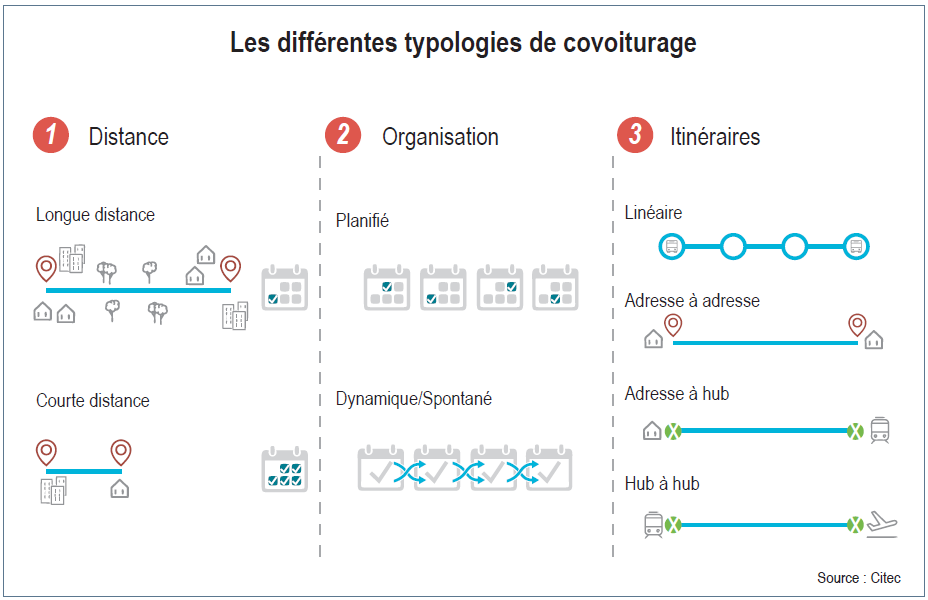
1 | The Different Types of Carpooling
Carpooling: A Solution to Solo Car Use
In many cases, the car is still perceived as more convenient than public transport or active mobility options. Carpooling offers a hybrid alternative, reducing environmental impact while maintaining flexibility and speed.
Two main use cases are targeted:
➤ Long-distance: Occasional trips between cities, with some scheduling flexibility
➤ Short-distance: Daily commutes, requiring reliability and punctuality
Carpooling can be:
➤ Planned: Booked several days in advance
➤ Dynamic: Reserved at the last minute
The organization of carpooling varies depending on the app used:
➤ Linear: Fixed routes with predefined stops
➤ Address-to-address: Manual or automatic matching
➤ Address-to-hub: Departure or arrival at a transport hub
➤ Hub-to-hub: Only between two mobility hubs
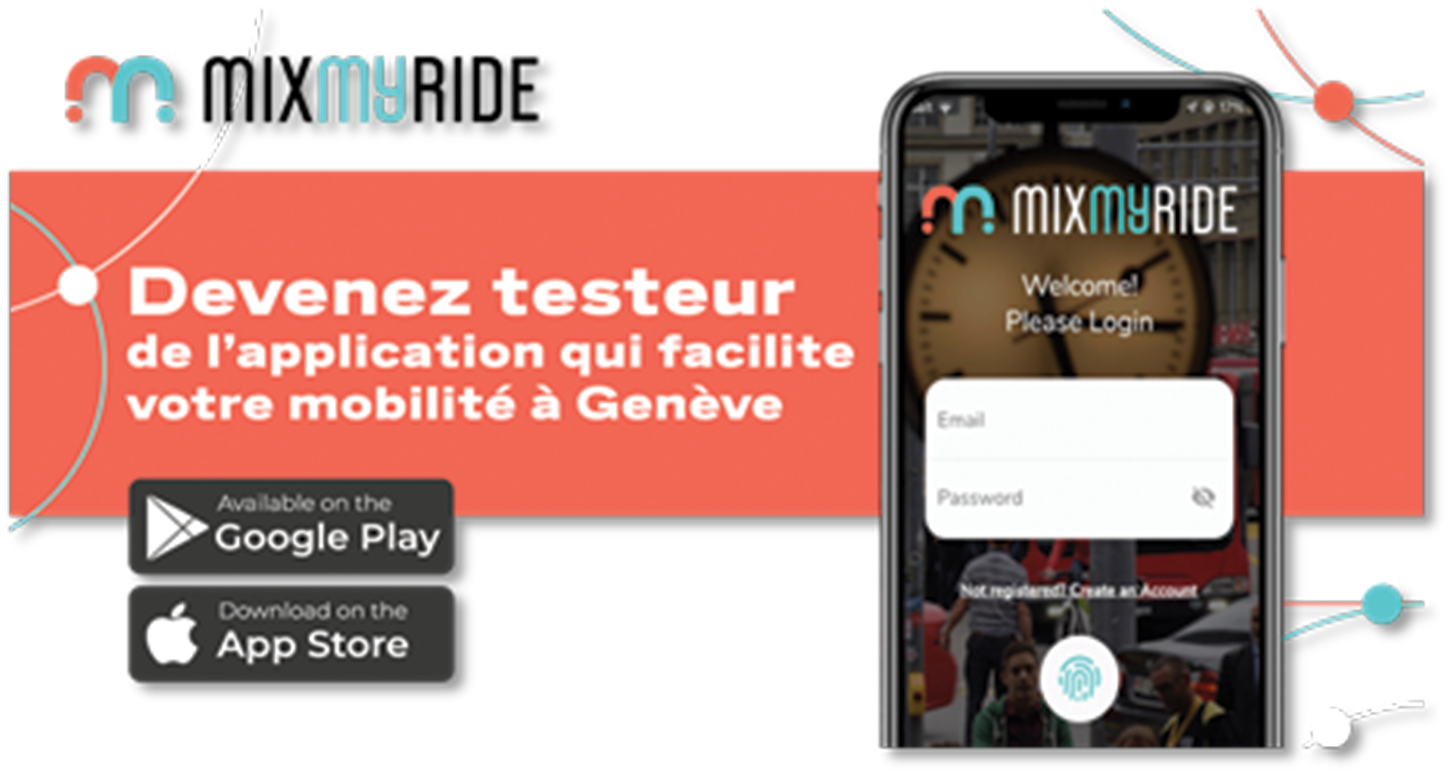
2 | Promotional Visual for the MixMyRide App
MaaS: Amplified Potential
Integrating carpooling within a MaaS (Mobility as a Service) framework enables the offering of multimodal journeys that combine public transport, active mobility, and carpooling. These modern platforms use real-time data to optimize routes. Whim is a prime example of MaaS, providing unlimited multimodal travel options.
MixMyRide: A Swiss Initiative
It is in this context that MixMyRide was created—an intelligent app combining tram, bus, bike, scooter, train, walking, and carpooling. It calculates the best possible combinations using AI and real-time data to offer a comprehensive alternative to private car use.
The MixMyRide Initiative: The Origin
MixMyRide is a Swiss research project co-funded by the Federal Office of Energy (FOEN) as part of a Public-Private Partnership. The platform was made available to the public in three regions—Lugano, Winterthur, and Geneva—for over a year (from March 2023 to April 2024) and offered in four languages (German, English, French, Italian) to test the application on a large scale and evaluate its effectiveness and impact under real conditions.
The expertise involved in developing the MaaS solution MixMyRide brought together researchers from the Universities of Applied Sciences in Italian-speaking Switzerland (SUPSI-ISAAC and IDSIA) and German-speaking Switzerland (ZHAW-INE), the Lugano Living Lab and WinLab, as well as the private carpooling provider BePooler and the mobility engineering firm Citec.
The initial goal of MixMyRide was to move beyond the traditional competition between modes of transport and instead foster fruitful collaboration among them. This multimodal MaaS mobile application (available on Android and iOS stores) was built around public transport as the backbone, adding carpooling and active mobility as opportunities to extend public transport networks, improving their performance and efficiency at the expense of individual car use. The app aimed to reduce solo car use and the associated CO₂ emissions by enabling users to plan and book trips that combine carpooling, public transportation, and active mobility.
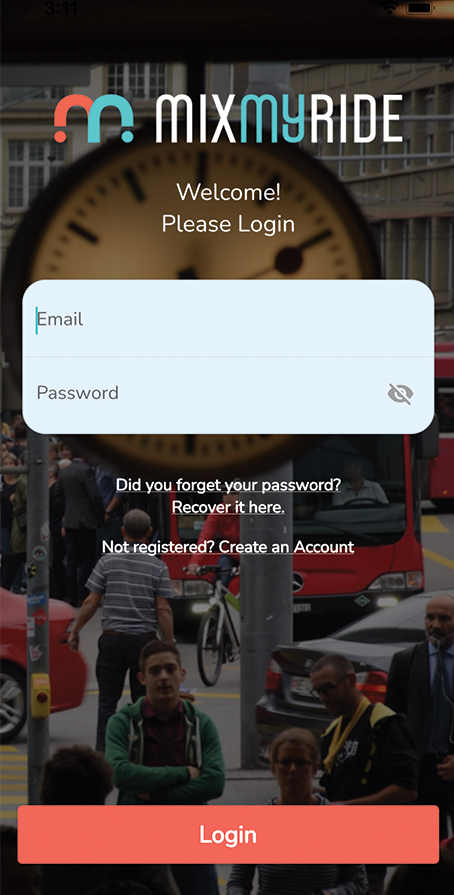
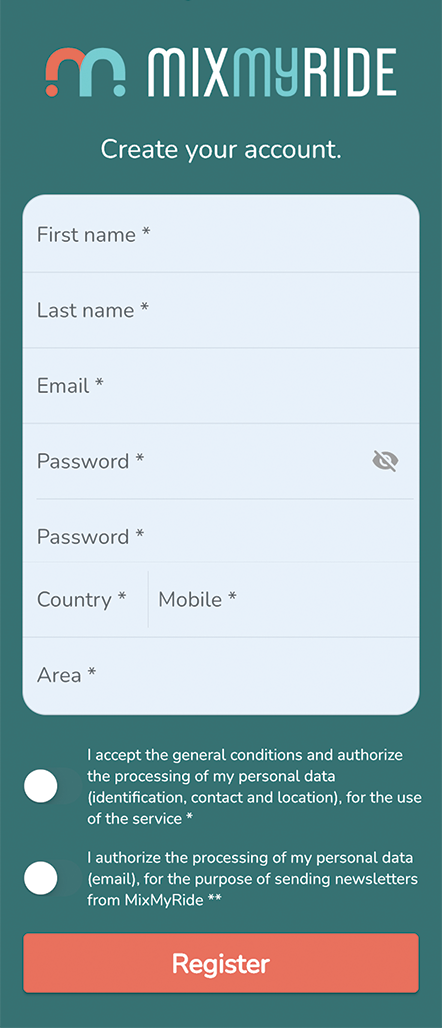
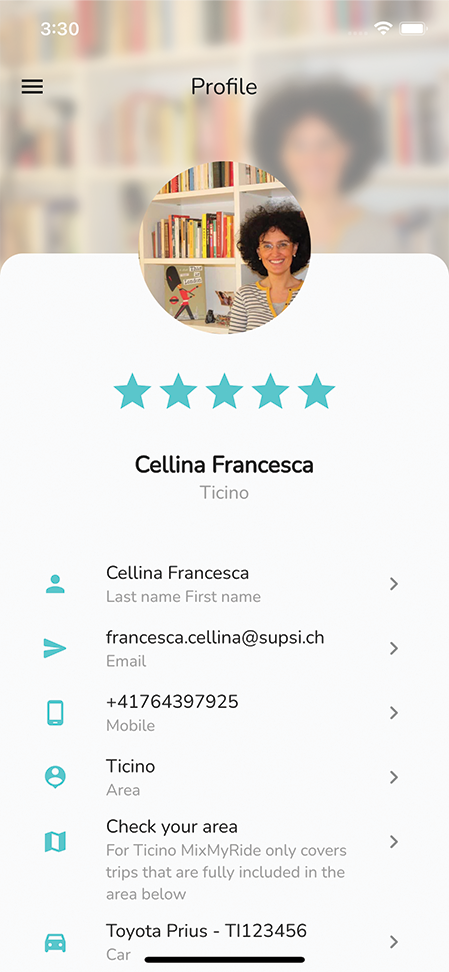
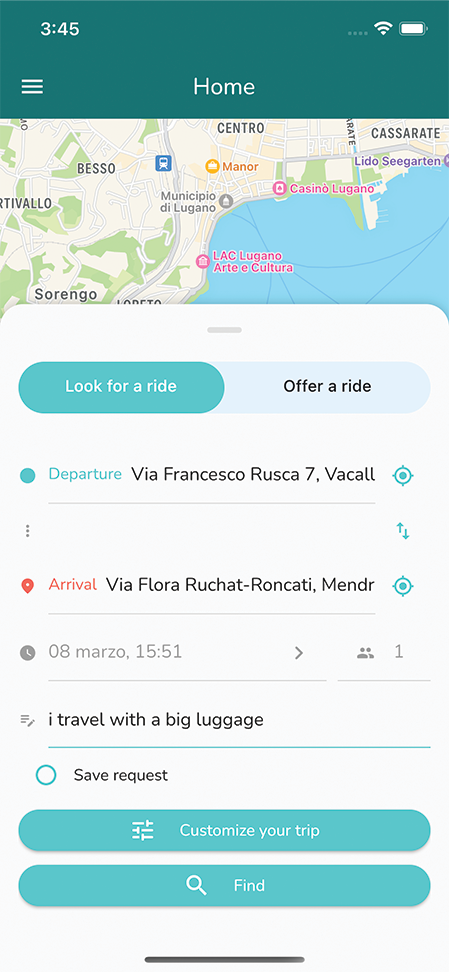
3 | Screenshots of the MixMyRide App: Login, Registration, User Profile, Home Page (from left to right).
MixMyRide: How Does It Work?
Between March 2023 and April 2024, MixMyRide was tested under real-life conditions to observe changes in mobility behavior. The app offered trip planning by combining public transport, walking, and carpooling. The user experience included registration, profile setup, trip requests, mode filtering, and route visualization on a map—similar to a journey planner like the SBB app.
When a carpooling option was available, a “Send Request” button appeared. The passenger could view the driver’s profile (including ratings and reviews) and then send a request. The driver received a notification, viewed the passenger’s profile, and accepted or declined the request.
If accepted, the trip was saved under “My Trips.” An internal messaging system was activated to facilitate communication regarding logistics (meeting points, delays, etc.). This built-in chat avoided reliance on external platforms. Only users who had shared a ride could add each other as friends or block one another, helping to prevent misuse and enhance safety.
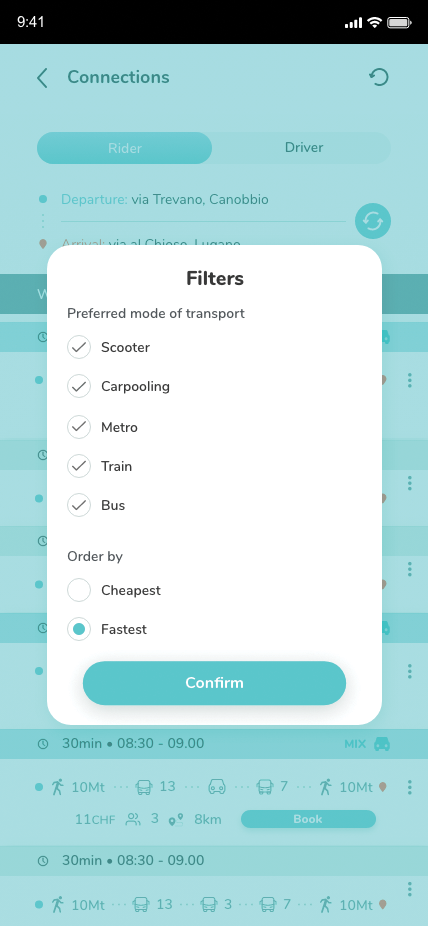
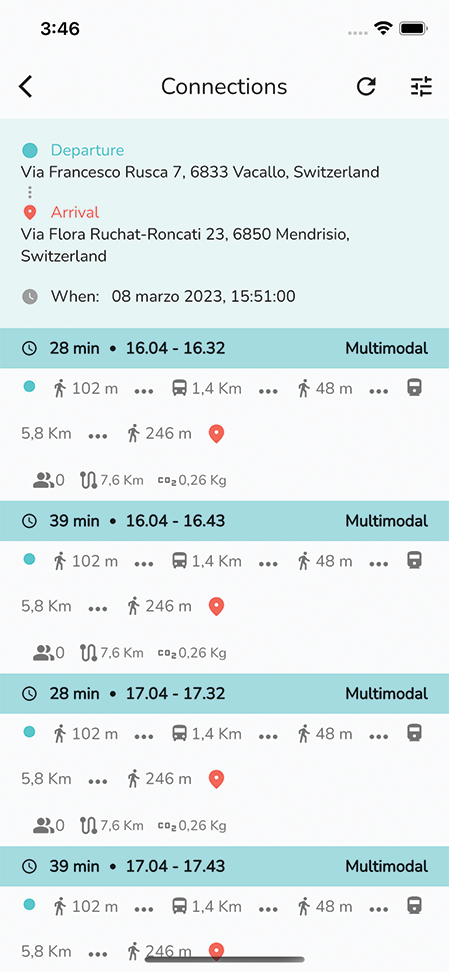
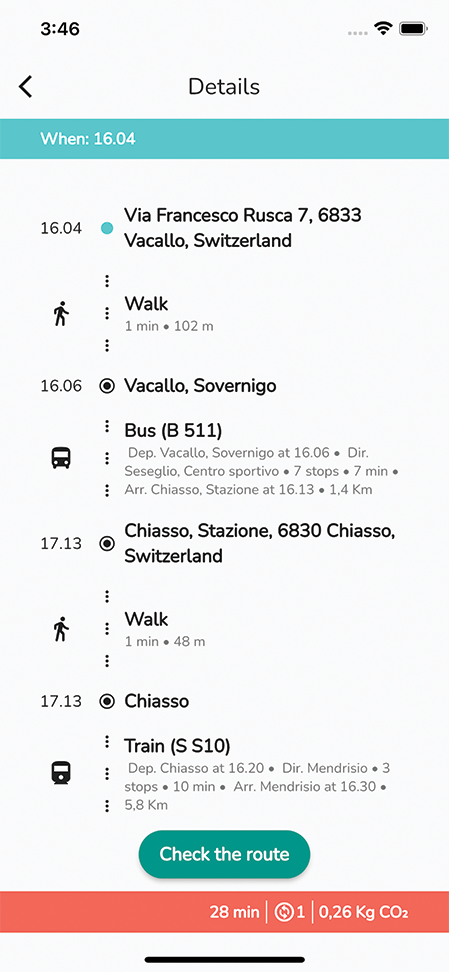
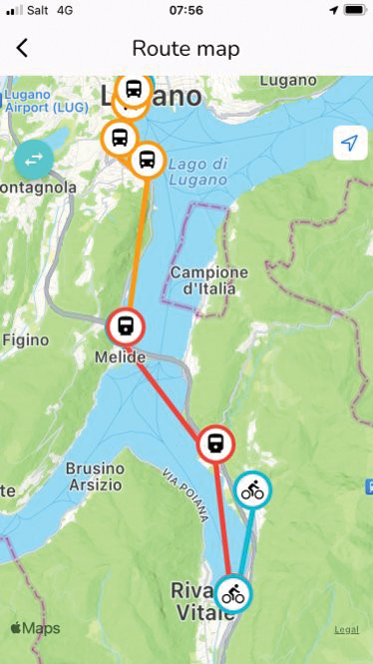
4 | Screenshots of the MixMyRide App: Filters for Selecting the Desired Mode, Overview of Multimodal Results, Details of a Route (“Traditional” with Public Transport and Walking), and Itinerary View.
MixMyRide: The Question of Data Usage
The trip planning system implemented in MixMyRide was based on algorithms developed specifically for the app. It provided users with multimodal travel suggestions by identifying the best combinations of trip segments. Artificial intelligence algorithms were integrated to match mobility supply and demand, as well as to calculate the likelihood of a mode being available based on historical occupancy data.
The “private car” mode was disabled, as the MixMyRide app did not offer routes using this mode of transport. The trip-matching algorithms were powered by the following datasets:
➤ GTFS public transport open data provided by the Federal Office of Transport (FOT), containing public transport schedules.
➤ Road traffic data supplied by the Federal Roads Office (FEDRO).
➤ Open data on shared bikes and e-scooters, accessible via the federal geoportal.
➤ Carpooling offers provided by users through the BePooler app and the MaaS platform.
➤ Route data collected from Google services, already in use by BePooler.
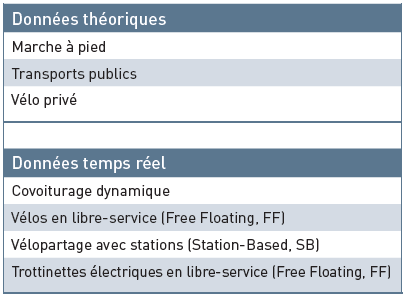
Table 1: MixMyRide – Types of Data Used
MixMyRide: The Question of Payment for Various Services
The MixMyRide project chose not to integrate a payment system between passengers and drivers in order to simplify registration and avoid collecting banking information. This allowed users to get started without administrative hurdles. However, the app did suggest a compensation rate of CHF 0.30 per kilometer, to be paid by the passenger to the driver if applicable.
For public transport, a partnership with the company Fairtiq (a public transport ticket validation solution) enabled users to validate their ticket easily with a single button press at the start and end of their trip.
As for shared bikes and e-scooters, MixMyRide did not handle reservations or payments. Instead, the app simply redirected users to the relevant third-party providers by links.
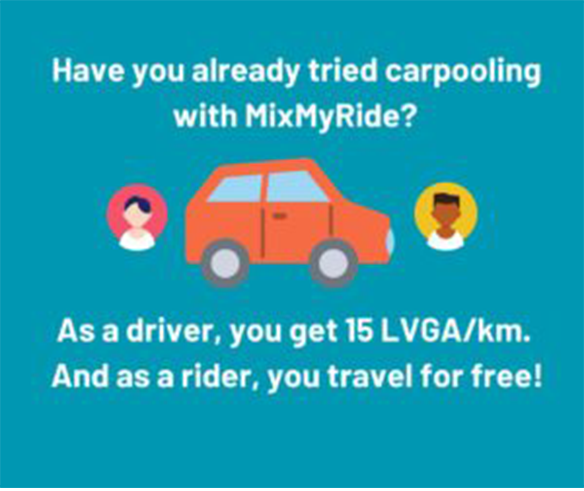
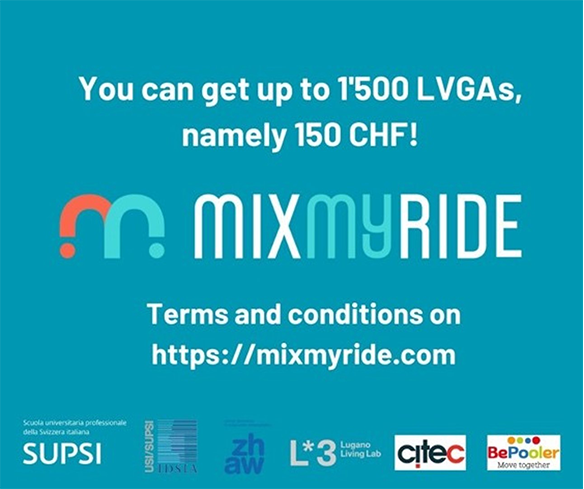
5 | Exemple de posts publiés sur les réseaux sociaux et le site de MixMyRide pour promouvoir le covoiturage.
MixMyRide: Incentives and Promotion
By using MixMyRide, users actively participated in the project by responding to three surveys aimed at evaluating the app’s impact on their mobility habits. Each region was allocated a budget of CHF 4,000, which was used to reward users through the following incentives:
➤ A CHF 20 welcome bonus for users who offered at least three carpooling rides
➤ Ten CHF 50 vouchers awarded in a biweekly draw among active users
➤ Two final prizes of CHF 250, conditional on full participation in the surveys
In Lugano, rewards were issued in local currency (LVGA), which is accepted by a network of local merchants (100 LVGA = 1 CHF). In the other regions, rewards were provided as vouchers for sustainable mobility services (e.g., public transport, shared bikes).
To support recruitment, a multichannel communication strategy was deployed. This included a quadrilingual website (mixmyride.com/fr/), a Facebook account, publications shared by partners, newsletters, and social media outreach. A multilingual communication kit was also designed to target different user profiles (drivers or passengers) and included slogans, flyers, web and press content.
Institutional support—such as RTS coverage and the March 2024 press conference in Lugano—further boosted the visibility of the initiative.
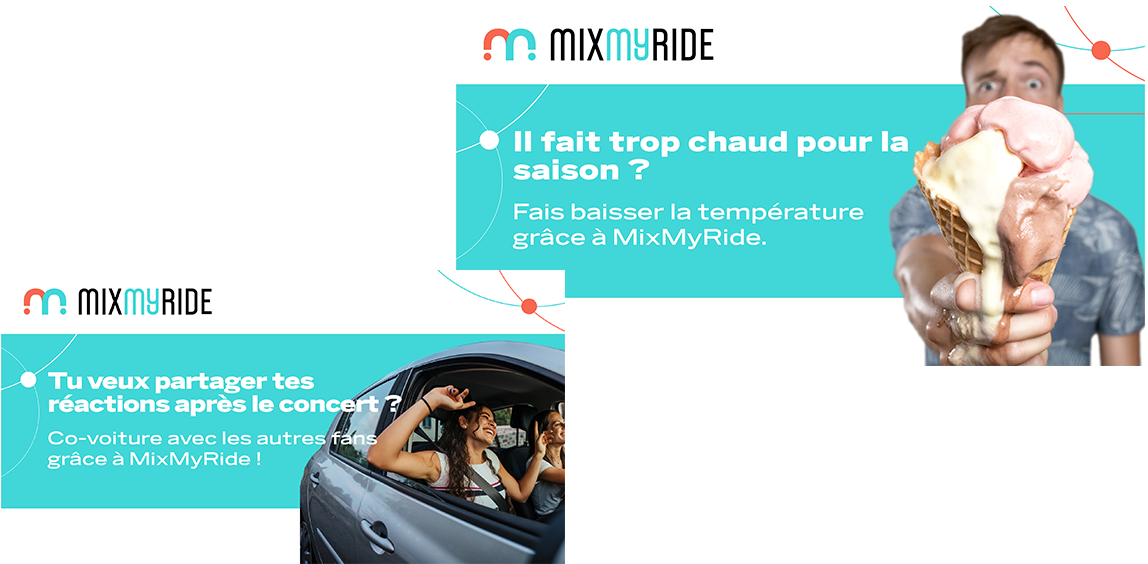
6 | Example of Communication Created to Reach the “Youth” Audience
MixMyRide: What’s the Outcome?
Evaluating an innovation like MixMyRide requires putting the results into perspective with the resources deployed. The experiment conducted across three linguistic regions provided clear insights.
By the end of the pilot phase (late April 2024), only 624 users had registered:
➤ 310 in Lugano
➤ 245 in Winterthur-Zurich
➤ 69 in Geneva
Most registrations in the Ticino region occurred in March and April 2023, coinciding with the app’s launch. In the Winterthur-Zurich area, three registration peaks were observed (May, July, and August 2023), corresponding with communication campaigns. In Geneva, most sign-ups happened at launch and in February 2024, also aligned with promotional activities.
The origin-destination (OD) patterns of the supply side are more stable, while those of the demand side are more variable.
Geospatial analyses conducted on the collected data indicate that, although the Winterthur-Zurich and Geneva areas have a lower overall number of trips (both offered and requested) compared to Lugano, a similar pattern occurs in these regions. The supply covers only a few municipalities, while the demand spans a territory five times larger.
Numbers Make the Success
With few offers and widely scattered demand, matching becomes nearly impossible—illustrated by the complete absence of completed trips in Winterthur-Zurich and Geneva!
The central cities act as attractors.
The central cities attracted the majority of trips. In Lugano, Lugano, Bellinzona, and Chiasso played this role, while in Winterthur-Zurich, the two main cities dominated trip requests. In contrast, in Geneva, unlike the other cities, there was no clear concentration of demand centered on the city itself, with trips often crossing between other municipalities.
Critical Mass: A Key Factor for Success
The low number of offers prevented reaching the critical mass, despite peer referrals, integrated messaging, and incentives. The project had to build its community from scratch, highlighting the importance of relying on an existing platform or community. Although MixMyRide was developed based on BePooler, a Swiss carpooling solution created in 2015 in Lugano, it was not possible within this research project to pool the users together.
One Approach: Concentrate Supply and Demand
MixMyRide aimed to combine public and shared transport to reach the driver’s pickup location. The low trip volumes suggest considering the creation of meeting hubs or more structured carpool routes to concentrate supply and demand. This system could initially be implemented in less dense areas, before expanding on a larger scale to an “address-to-address” system once a solid user community is established.
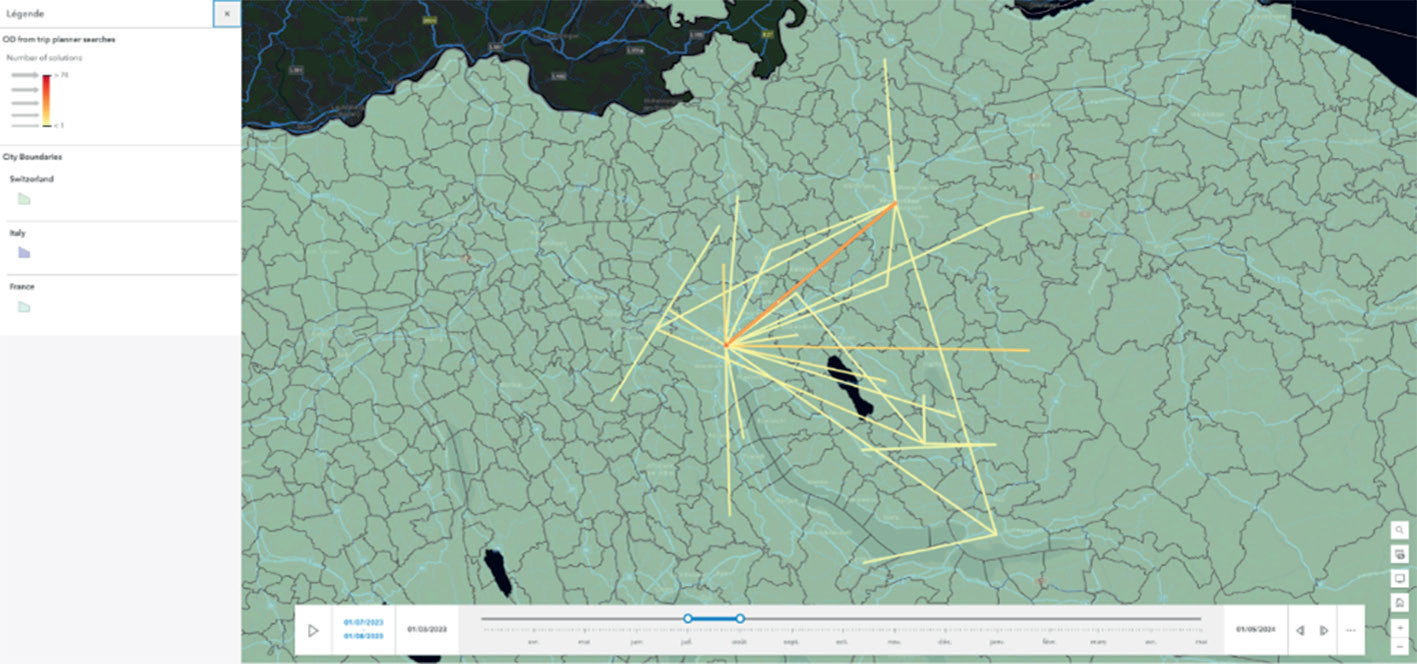
7 | Map of Requested Carpooling Routes (Passengers) Between June and July 2023 (Winterthur-Zürich Region).
MixMyRide: What’s Next?
The innovation offered by MixMyRide remains unique in its kind: it aggregates all modes of transport, including carpooling. While Swiss public transport is generally efficient, rural or cross-border areas remain poorly served.
The French experience demonstrates the effectiveness of financial incentives, but MixMyRide highlights the value of integrating carpooling with public transport. The experience gained by BePooler since 2015 has shown that managing parking (reserved spaces for carpoolers) or the use of dedicated lanes are powerful motivators for carpooling.
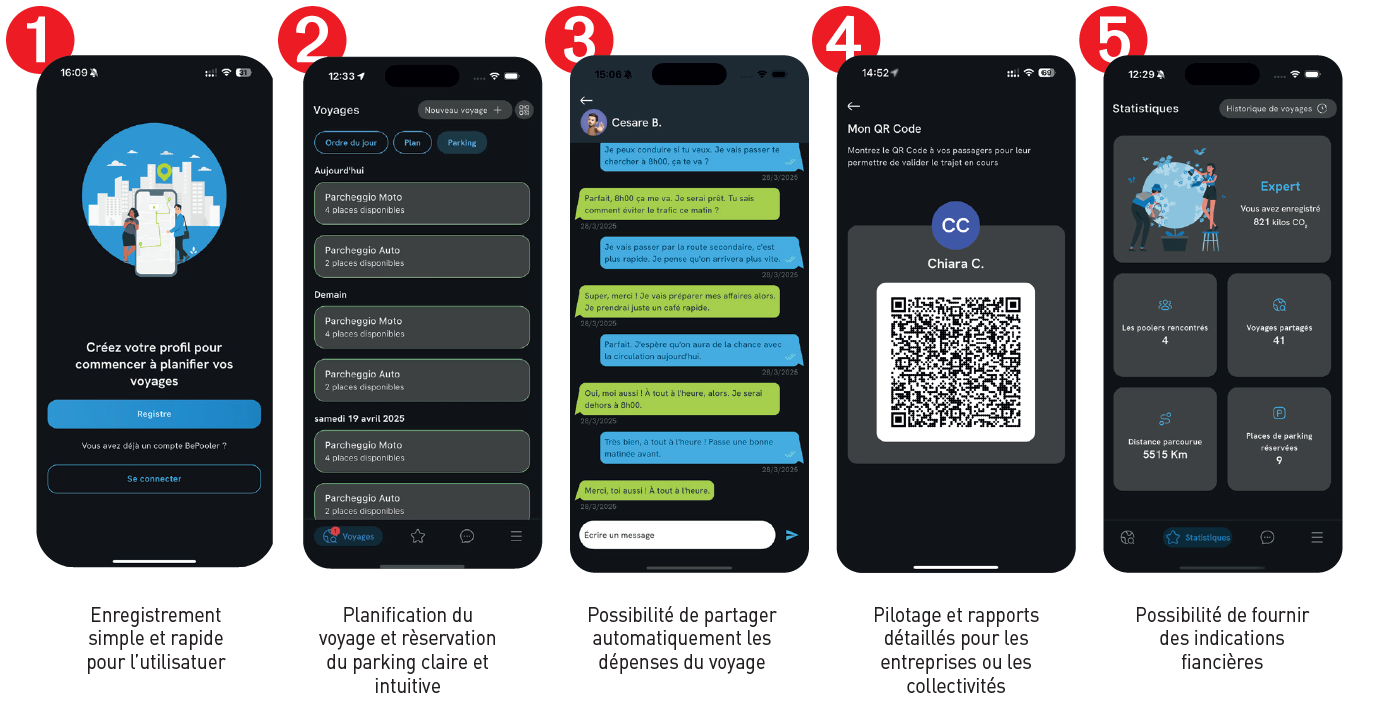
8 | Customer Journey of the BePooler Application
BePooler (with or without MixMyRide) offers these services to companies (or clusters of companies) facing parking saturation and/or aiming to reduce their carbon footprint while improving workplace quality of life. The incentive is no longer just financial but also includes guaranteed parking availability at the destination as part of a corporate mobility plan. Since drivers and passengers share at least the workplace as an origin or destination, the likelihood of finding a match is higher.
To support companies in their ESG (Environmental, Social, and Governance) reporting, the BePooler solution (with or without MixMyRide) allows app users to log their carpool trips as well as trips made by public transport, bike, or telework. This way, the carbon footprint and mobility monitoring for both individuals and companies can be tracked and used for continuous improvement.
To generate a tangible impact on urban mobility and carbon emissions, future MaaS initiatives like MixMyRide are advised to prioritize building a community around an existing, active platform and/or user base. A significant budget must be allocated to promotion, advertising, and potentially financial incentives.
While public transport is widely subsidized—a benefit that should be preserved—carpooling could also, under certain conditions, justify public support.
The MixMyRide experience illustrates the potential of an integrated, more flexible, greener, and collaborative mobility ecosystem. The experiment revealed obstacles, especially the lack of critical mass, but also genuine levers for action. Success will require focusing on building active communities, targeted incentives, and better structuring of supply.
Carpooling is not an end in itself but a strategic link in rethinking mobility. MixMyRide made it possible to test the pooling of transport options for more connected and sustainable territories.
Sources
«Résultats du microrecensement sur le comportement en matière de transport en 2021». Office fédéral de la statistique (OFS), Mobilité en Suisse, 2021.
«Embouteillages et pertes de temps»,
www.bfs.admin.ch/bfs/fr/home/statistiques/mobilite-transports/infrastructures-transport-vehicules/comptage-suisse-circulation-route/embouteillages.html
Coût annuel d’une voiture en Suisse,
https://fr.comparis.ch/carfinder/autofahren/auto-kosten
Comment les Suisses dépensent leur argent et comment vous pouvez économiser,
www.moneyland.ch/fr/argent-depenses-menages-suisses-economiser-conseils
Émissions de gaz à effet de serre générées par les transports ,
www.bafu.admin.ch/bafu/fr/home/themes/climat/etat/donnees/inventaire-gaz-effet-serre/transports.html
Francesca Cellina, Marco Derboni, Vincenzo Giuffrida, Mirko Baruffini, Paolo Mastrobuono, Jan Trautmann, Uros Tomic, Raphael Hoerler, and Camille Vedel (2024). Integrating Carpooling in Mobility-as-a-Service Platforms:
Learnings from Co-design Activities. In Transport Transitions: Advancing Sustainable and Inclusive Mobility:
Proceedings of the 10th TRA Conference, 2024, Dublin, Ireland – Volume 2: Sustainable Transport Development | SpringerLink.
Derboni, M., Rizzoli, A. E., Montemanni, R., Jamal, J., Kovacs, N., & Cellina, F. (2018). Challenges and opportunities in deploying a mobility platform integrating public transport and carpooling services. In 18th Swiss Transport Research Conference (STRC).
Ho, C. Q., Mulley, C., & Hensher, D. A. (2019). Public preferences for mobility as a service: Insights from stated preference surveys.
Transportation Research Part A: Policy and Practice.
Mulley, C., 2017. Mobility as a services (MaaS) – Does it have critical mass? Transport Reviews, 37:3, 247–251.
Schikofsky, J., Dannewald, T., & Kowald, M. (2020). Exploring motivational mechanisms behind the intention to adopt mobility as a service (MaaS): Insights from Germany. Transportation Research Part A: Policy and Practice, 131, 296–312.
https://doi.org/10.1016/j.tra.2019.09.022.
Wright, S., Cellina, F., Bulgheroni, M., Cartolano, F., Lucietti, L., Patrick, V. E., & Luc, V. W. (2018). Public acceptance of SocialCar, a new mobility platform integrating public transport and carpooling services: insights from a survey in five European cities.
Transport Research Arena (TRA) 2018.
